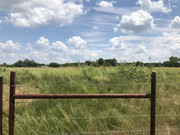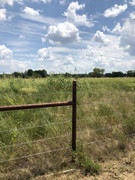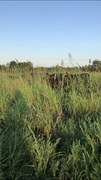ValleyView
Well-known member
Apologies in advance if this has been discussed ad nauseam, but what are y'alls thoughts on grazing pastures with heavy stands of Johnson Grass (JG)?
For reference, said pasture was fertilized with 150lbs of 9-23-30 and 50lbs of AMS so it was far from a hot mix. We've had tons of rain and I'd venture to say this pasture is 30-40% JG with remaining 60% being other WSG's, Sericea, weeds and legumes. The majority of the stand is well above 18" in height.
Last year, I stockpiled this pasture until early March (2019) to give the girls something better than a cue ball to calve on, but would like to let my first calf heifers graze it to gain steam as their calves are coming on 3 months now and I will soon turn the bull in with them.
Anything y'all do special prior to grazing in heavy JG pastures other than make sure they don't get turned in on empty stomachs?
For reference, said pasture was fertilized with 150lbs of 9-23-30 and 50lbs of AMS so it was far from a hot mix. We've had tons of rain and I'd venture to say this pasture is 30-40% JG with remaining 60% being other WSG's, Sericea, weeds and legumes. The majority of the stand is well above 18" in height.
Last year, I stockpiled this pasture until early March (2019) to give the girls something better than a cue ball to calve on, but would like to let my first calf heifers graze it to gain steam as their calves are coming on 3 months now and I will soon turn the bull in with them.
Anything y'all do special prior to grazing in heavy JG pastures other than make sure they don't get turned in on empty stomachs?





